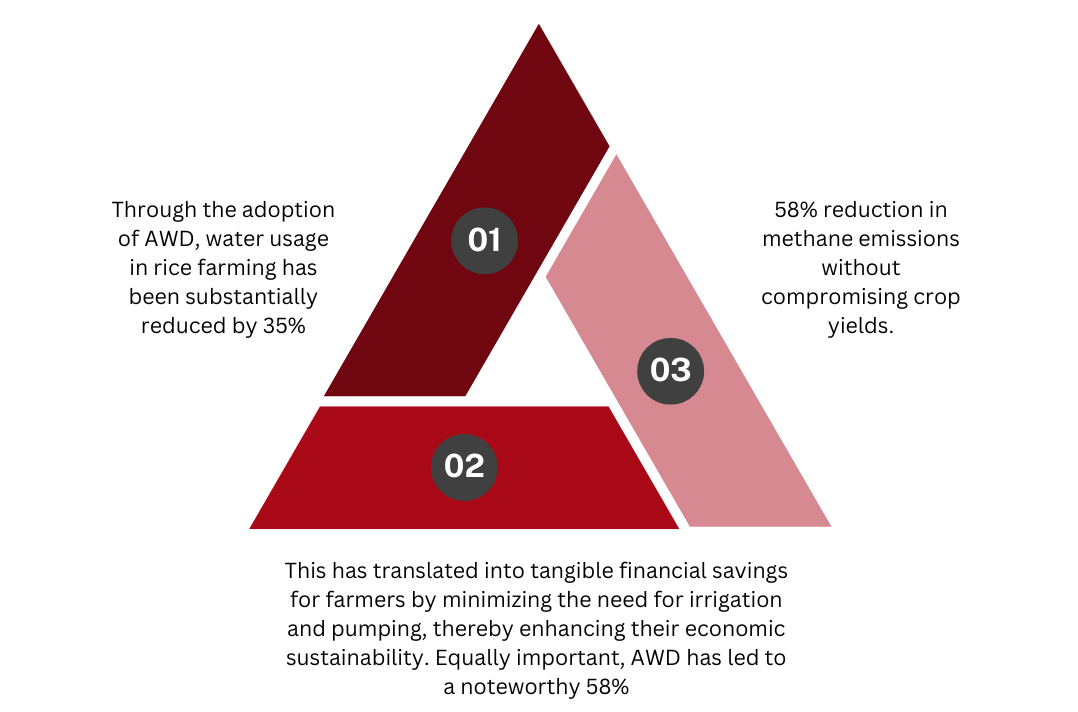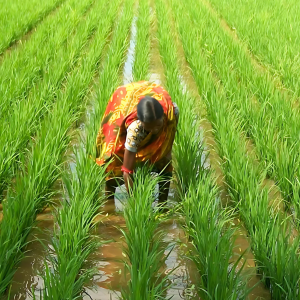Core Carbon Sustainable Rice Initiative with the support of CCX
This dual benefit of resource conservation and emission reduction underscores the project’s commitment to sustainable agriculture.
The main goal of the project is – Methane avoidance from the rice field through the AWD method. The project was started on 4th August, 2022. Farmers from 76 villages of Barpalii and Sohela Blocks of Bargarh participated in the project. As a result, a database of 6832 farmers has been created in the fiscal year.
The project achieved its stratified goals through the following strategies:
Activities of the Project
Project Milestones Farmer Awareness Programme: The project team has organised farmer awareness programs to educate local farmers about the advantages of AWD and sustainable rice cultivation practices. This step was pivotal in garnering support and participation from the target beneficiaries.

Data Collection: robust data collection process was established to gather essential information on local farming practices, water usage, and emissions.
Agreements with Farmers: Through productive dialogue and collaboration, we secured agreements with more than 6832 small and marginal farmers to implement AWD on their paddy fields.

PVC Pipe Installation: To facilitate precise control over water supply, 4000 PVC pipes were installed across 14000 Acres of farmland, contributing to efficient water management.
Geo-Fencing: Geo-fencing technology was employed to define specific areas for AWD implementation, enhancing precision in resource management. 14000 acres of Geo fencing was completed.
Training on AWD Method: training sessions were conducted to equip farmers with the knowledge and skills required to implement the AWD method effectively
Farmer Database Creation: We established a comprehensive farmer database to track progress, monitor results, and ensure the sustainability of the project’s impact.
Plot Geo-Mapping: Over 14,000 Acres of land were meticulously geo-mapped to monitor and optimize AWD practices.
Our project partner, Core CarbonX (CCX), has been diligently monitoring the discharge of carbon credits through geo-mapping. This ensures the accurate quantification and documentation of the project’s environmental impact and its contribution to carbon credit generation
